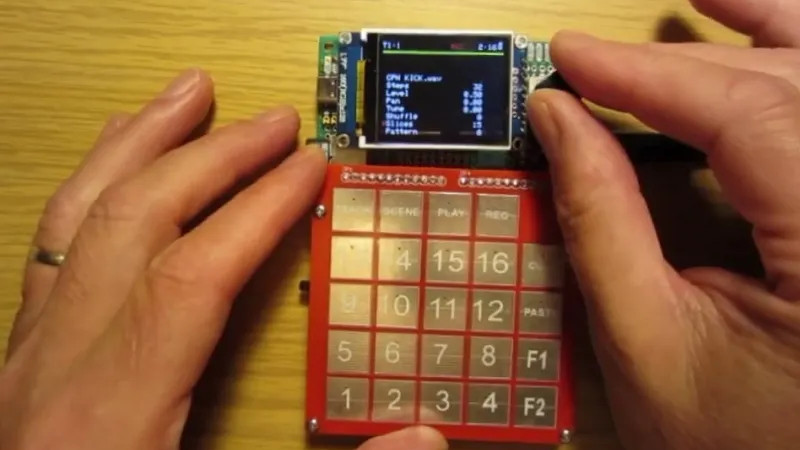From the 60s to perhaps the mid-00s, the path to musical stardom was essentially straight with very few forks. As a teenager you’d round up a drummer and a few guitar players and start jamming out of a garage, hoping to build to bigger and bigger venues. Few people made it for plenty of reasons, not least of which was because putting together a band like this is expensive. It wasn’t until capable electronic devices became mainstream and accepted in popular culture in the last decade or two that a few different paths for success finally opened up, and this groovebox shows just how much music can be created this way with a few straightforward electronic tools.
The groovebox is based on a Raspberry Pi Pico 2 and includes enough storage for 16 tracks with a sequencer for each track, along with a set of 16 scenes. Audio plays through PCM5102A DAC module, with a 160×128 TFT display and a touch-sensitive pad for user inputs. It’s not just a device for looping stored audio, though. There’s also a drum machine built in which can record and loop beats with varying sounds and pitches, as well as a sample slicer and a pattern generator and also as the ability to copy and paste clips.
There are a few limitations to using a device this small though. Because of memory size it outputs a 22 kHz mono signal, and its on-board storage is not particularly large either, but it does have an SD card slot for expansion. But it’s hard to beat the bang-for-the-buck qualities of a device like this, regardless, not to mention the portability. Especially when compared with the cost of multiple guitars, a drum set and a bunch of other analog equipment, it’s easy to see how musicians wielding these instruments have risen in popularity recently. This 12-button MIDI instrument could expand one’s digital musical capabilities even further.















Roland MC-101.
Basically a MOD tracker with an unusual user interface.
Cool project. Is it considered a digital multi track? It kind of reminds me of a Zoom R8 without internal mics.
Nice! A true pocket size Pocket Operator.
i like the rp2040 for this! it’s much more powerful than the PC i learned ‘modedit’ with.
for devices like this, i think the hardest part is coming up with the arbitrary limitations that define the user interface. you’re basically deciding what kind of music can be produced by how the sequencer works, at the same time as deciding the conditions of the musician’s labor. designing a musical instrument is hard!
i find the idea of cost mattering is an interesting frame. a lot of musicians’ biographies include stories of how they got ahold of an instrument. i think developing the skills to build or even use this potentially-$10 device are much rarer than having a grandpa who buys you a stratocaster knockoff when you’re 10. having a piano in the house used to be an important mark of class status, and even today a ton of parents just casually have a casio electronic keyboard in the corner somewhere. there’s a drummer in that box! :) nevermind that even though people pay a lot of money for smartphones, everyone has one.
i think one of the coolest technological developments of the last 30 years is what the asian industrial revolution has done to instruments. there’s a tolerable $100 version of almost every instrument in the band now. i love my chinese accordion! everyone should buy one of the $15 melodicas on temu. a truly great learning instrument, imo.
“i like the rp2040 …” And now you have the Pico 2 2350A and 2350B boards with give you more wiggle room. I recently ordered 3 ‘Pimoroni Pico Plus 2’ boards as I want to check out the 2350B version … for fun. No real projects in mind … yet.
And there is a shift key on keyboards to do proper capitalization you know ;) .
Hey! Nice work! where could i find the diagrams of the project?